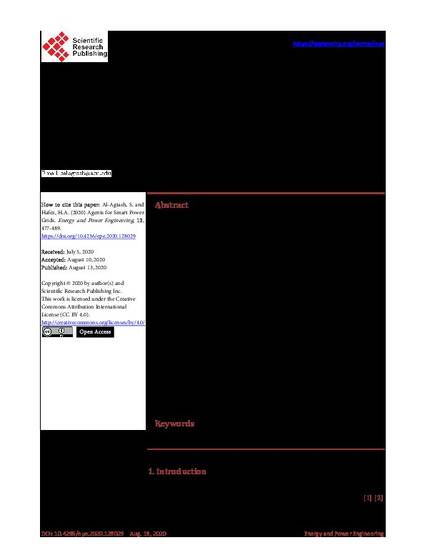
The future of electricity systems will compose of small-scale generation and distribution where end-users will be active participants with localized energy management systems that are able to interact on a free energy market. Software agents will most likely control power assets and interact together to decide the best and safest configuration of the power grid system. This paper presents a design of agents that can be deployed in real-time with capabilities that include optimization of resources, intensive computation, and appropriate decision-making. Jordan 51-bus system has been used for simulation with a total generation capacity of 4050 MW of which 230 MW represents renewable energy. The economic analyses demonstrated the use of smart grid technologies with 2016 generation—load profiles for nominal liquified gas (NLG) prices and ±20% sensitivity analysis. The results have shown variations in the range of 1% in the price of MWh with smart grid technologies. These variations are mainly driven by the fact that agents shift power generation to renewable power plants to produce maximum power at peak hours. As a result, there is a positive economic impact in both NLG ± 20% sensitivity analysis, due to the fact that agents coordinate to better displace expensive thermal generation with renewable generation. It is evident that renewable resources compensate for power at peak times and provide economic benefits and savings.

Copyright © 2020 by author(s) and Scientific Research Publishing Inc. This work is licensed under the Creative Commons Attribution International License (CC BY 4.0). http://creativecommons.org/licenses/by/4.0/